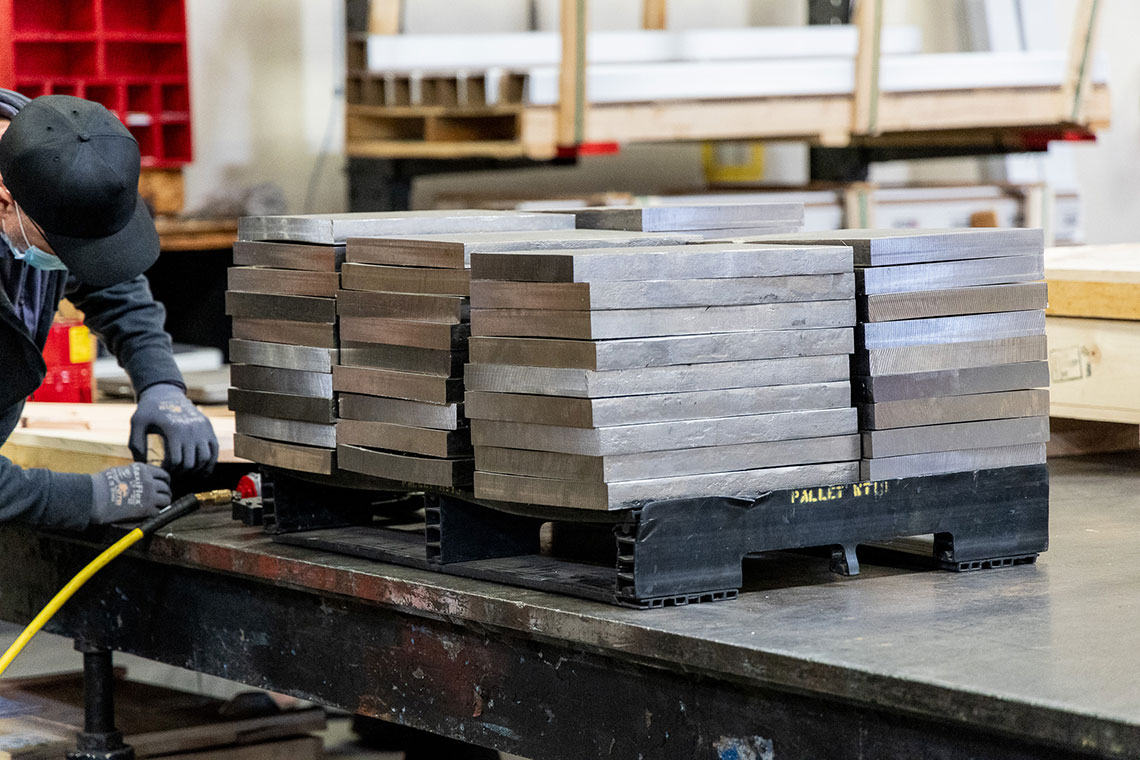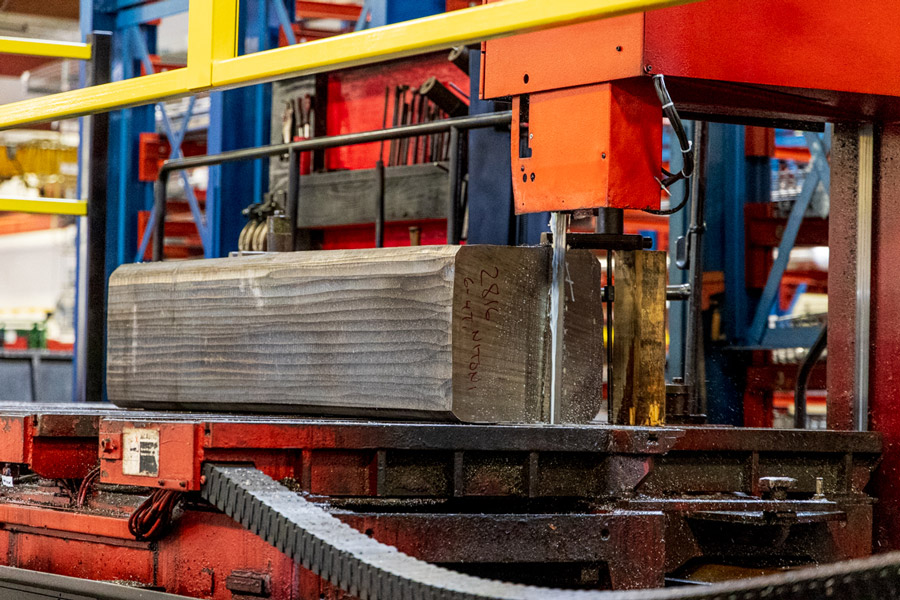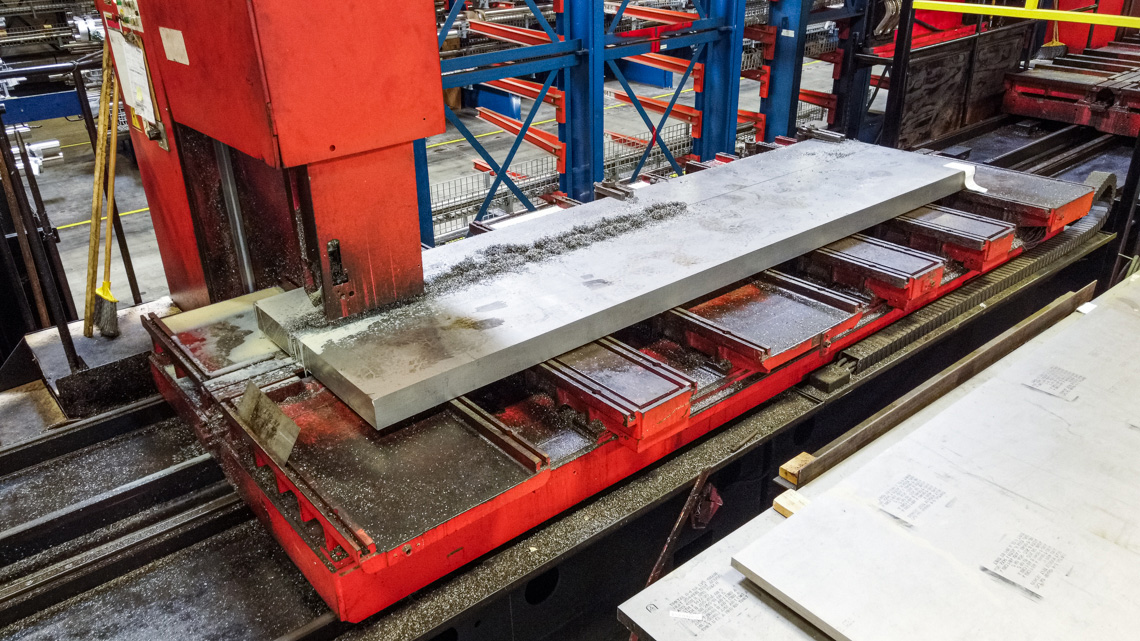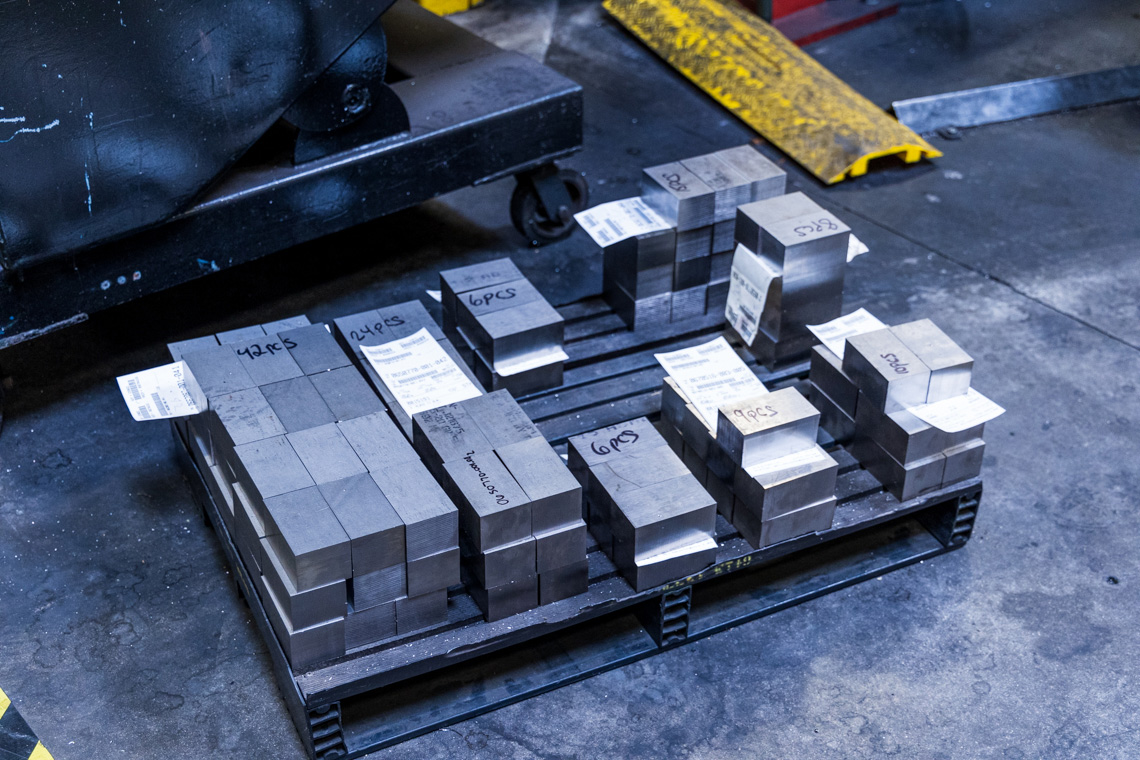Share:
Quote, Buy, Track!
We make it easy to get instant pricing and purchase your metal at the click of a button. Track your order progress, get notified when it ships, and follow your shipment online until it’s delivered. It’s that easy!
Trade Shows
Come talk to a Rolled Alloys representative in person about your project. You can find us at these trade shows.
Instant Pricing on Nickel, Stainless Steel, Duplex, and Titanium
Get real-time pricing and availability for nickel, stainless steel, duplex, and titanium—all in one place.
New and Expanded Stock for 2025
New Titanium, Stainless, Nickel and Cobalt in Stock Now – CP Ti Grade 2, 635, 718 and More!
History and Uses of Alloy 800
Discover the evolution of Alloy 800, from its origins during the 1950s to modern derivatives like Alloy 800H/800HT. Learn about its high-temperature strength, petrochemical applications, and commercial availability today.
New Rolled Alloys Facility in Ohio
Rolled Alloys announces new facility located in Toledo, Ohio.
Reasons Why Duplex Stainless Steels are Replacing the 300 Series
Explore the four key benefits of duplex stainless steel: high strength, superior corrosion resistance, ease of fabrication, and cost-effectiveness. Understand why 2205 is favored over 304/304L and 316/316L for industrial applications.
Understanding P-Numbers and F-Numbers in Welding
P-Numbers and F-Numbers are essential classifications in the welding industry, particularly for projects that follow ASME codes and…
Chicago Oktobarfest 2024
Join us for food, demo’s and prizes on October 11th from 11 a.m to 3:30 p.m at 711 Phoenix Lake Ave, Streamwood, Illinois.
High Temperature Strength – An Explanation of Creep and Rupture
Learn how metal strength at high temperatures differs from room temperature in this comprehensive guide. Discover the importance…
Positive Material Identification (PMI)
Learn about the latest advancements in Positive Material Identification (PMI) from portable XRF to OES instruments. Understand their…
The History and Uses of AL-6XN®
AL-6XN® was developed to improve the corrosion resistance of AL-6X in seawater environments, offering better performance in resisting…
Bar Products: Specifications, Key Processes, and Common Confusions Explained
When delving into the intricacies of bar products, specific terms, processes, and even specifications are common areas of misunderstanding.
Chloride Stress Corrosion Cracking (CSCC) in Indoor Swimming Pools
Explore the causes and solutions for chloride stress corrosion cracking (CSCC) in 300 series stainless steels used in indoor swimming pool environments.
Rolled Alloys provides the following information to offer a basic understanding of the various titanium grades and their relative properties.
Titanium comes in two main categories: commercially pure grades and titanium alloy grades. Titanium alloy categories include alpha-titanium, beta-titanium, and alpha-beta titanium, which correspond to different structural phases of the material. The commercially pure grades are classified as Grades 1 through 4. Each grade exhibits distinct variations in allowable element limits and strength levels. More detailed information about the chemical compositions and mechanical properties of these grades is provided below.
| Grade | C | N | O | H | Fe | Ti |
| 1 | 0.08 | 0.03 | 0.18 | 0.015 | 0.2 | Bal |
| 2 | 0.08 | 0.03 | 0.25 | 0.015 | 0.3 | Bal |
| 3 | 0.08 | 0.05 | 0.35 | 0.015 | 0.3 | Bal |
| 4 | 0.08 | 0.05 | 0.40 | 0.015 | 0.5 | Bal |
*All values are maximums unless a range is provided
| Grade | Tensile (ksi) | Yield (ksi) | Elongation (%) |
| 1 | 35 | 20 | 24 |
| 2 | 50 | 40 | 20 |
| 3 | 65 | 55 | 18 |
| 4 | 80 | 70 | 15 |
*All values are minimums per ASTM B348
Three titanium alloys closely resemble commercially pure titanium being Grades 7, 11, and 12. Grade 7 is comparable to Grade 2 in terms of mechanical properties but boasts superior corrosion resistance due to the addition of up to 0.25% Pd, making it exceptionally resilient against reducing acids. Similarly, Grade 11 shares similarities with Grade 1 but includes an addition of up to 0.25% Pd, enhancing its resistance to crevice corrosion and reducing acids. Grade 12, on the other hand, features slightly higher minimum mechanical property requirements than Grade 3 but lower than Grade 4. What sets Grade 12 apart from the commercially pure grades is its composition, containing 0.60-0.90% nickel content and 0.20-0.40% molybdenum. The tables below present the chemical compositions and mechanical properties of these alloys.
Grade | C | N | O | H | Fe | Pd | Ni | Mo | Ti |
7 | 0.08 | 0.03 | 0.25 | 0.015 | 0.30 | 0.12-0.25 | – | – | Bal |
11 | 0.08 | 0.03 | 0.18 | 0.015 | 0.20 | 0.12-0.25 | – | – | Bal |
12 | 0.08 | 0.03 | 0.25 | 0.015 | 0.30 | – | 0.60-0.90 | 0.20-0.40 | Bal |
*All values are maximums unless a range is provided
Grade | Tensile (ksi) | Yield (ksi) | Elongation (%) |
7 | 50 | 40 | 20 |
11 | 35 | 20 | 24 |
12 | 70 | 50 | 18 |
*All values are minimums per ASTM B348
The next alloy, often called “6-4” or Grade 5, is the most widely used titanium alloy globally, constituting over half of the world’s titanium production. Another widely utilized variation is 6-4 ELI (Extra Low Interstitial), recognized as Grade 23, predominantly employed in the medical implant industry. All 6-4 alloys belong to the alpha-beta alloy category and can be heat-treated to achieve a wide range of properties, depending on the heat treatment applied. However, it’s worth noting that 6-4 ELI presents challenges in achieving minimum mechanical heat-treat properties due to its strict maximum oxygen requirement. Please consult the table below for detailed information on chemistry and typical mechanical properties.
Grade | Al | V | C | N | O | H | Fe | Ti |
5 | 5.50-6.75 | 3.50-4.50 | 0.08 | 0.05 | 0.20 | 0.015 | 0.40 | Bal |
5 STA | 5.50-6.75 | 3.50-4.50 | 0.08 | 0.05 | 0.20 | 0.015 | 0.40 | Bal |
23 | 5.50-6.50 | 3.50-4.50 | 0.08 | 0.03 | 0.13 | 0.0125 | 0.25 | Bal |
*All values are maximums unless a range is provided
Grade | Tensile (ksi) | Yield (ksi) | Elongation (%) |
5 | 130 | 120 | 10 |
5 STA | 130 | 120 | 10 |
23 | 120 | 110 | 10 |
*All values are minimums per ASTM B348
For more specific titanium questions, give us a call at 800-521-0332 or email us at help-tech@rolledalloys.com
Titanium Grade Chemistry Table
Grade | C | O | N | H | Fe | Al | V | Pd | Ru | Ni | Mo | Cr | Co | Zr | Nb | Sn | Si | Ti |
1 | 0.08 | 0.18 | 0.03 | 0.015 | 0.20 | – | – | – | – | – | – | – | – | – | – | – | – | Bal |
2 | 0.08 | 0.25 | 0.03 | 0.015 | 0.30 | – | – | – | – | – | – | – | – | – | – | – | – | Bal |
3 | 0.08 | 0.35 | 0.05 | 0.015 | 0.30 | – | – | – | – | – | – | – | – | – | – | – | – | Bal |
4 | 0.08 | 0.10 | 0.05 | 0.015 | 0.50 | – | – | – | – | – | – | – | – | – | – | – | – | Bal |
5 | 0.08 | 0.20 | 0.05 | 0.015 | 0.40 | 5.50-6.75 | 3.50-4.50 | – | – | – | – | – | – | – | – | – | – | Bal |
6 | 0.08 | 0.20 | 0.03 | 0.015 | 0.50 | 4.00-6.00 | – | – | – | – | – | – | – | – | – | 2.00-3.00 | – | Bal |
7 | 0.08 | 0.25 | 0.03 | 0.015 | 0.30 | – | – | 0.12-0.25 | – | – | – | – | – | – | – | – | – | Bal |
9 | 0.08 | 0.15 | 0.03 | 0.015 | 0.25 | 2.50-3.50 | 2.00-3.00 | – | – | – | – | – | – | – | – | – | – | Bal |
11 | 0.08 | 0.18 | 0.03 | 0.015 | 0.20 | – | – | 0.12-0.25 | – | – | – | – | – | – | – | – | – | Bal |
12 | 0.08 | 0.25 | 0.03 | 0.015 | 0.30 | – | – | – | – | 0.60-0.90 | 0.20-0.40 | – | – | – | – | – | – | Bal |
13 | 0.08 | 0.1 | 0.03 | 0.015 | 0.20 | – | – | – | 0.04-0.06 | 0.40-0.60 | – | – | – | – | – | – | – | Bal |
14 | 0.08 | 0.15 | 0.03 | 0.015 | 0.30 | – | – | – | 0.04-0.06 | 0.40-0.60 | – | – | – | – | – | – | – | Bal |
15 | 0.08 | 0.25 | 0.05 | 0.015 | 0.30 | – | – | – | 0.04-0.06 | 0.40-0.60 | – | – | – | – | – | – | – | Bal |
16 | 0.08 | 0.25 | 0.03 | 0.015 | 0.30 | – | – | 0.04-0.08 | – | – | – | – | – | – | – | – | – | Bal |
17 | 0.08 | 0.18 | 0.03 | 0.015 | 0.20 | – | – | 0.04-0.08 | – | – | – |
| – | – | – | – | – | Bal |
18 | 0.08 | 0.15 | 0.03 | 0.015 | 0.25 | 2.50-3.50 | 2.00-3.00 | 0.04-0.08 | – | – | – | – | – | – | – | – | – | Bal |
19 | 0.05 | 0.12 | 0.03 | 0.02 | 0.30 | 3.00-4.00 | 7.50-8.50 | – | – | – | 3.50-4.50 | 5.50-6.50 | – | 3.50-4.50 | – | – | – | Bal |
20 | 0.05 | 0.12 | 0.03 | 0.02 | 0.30 | 3.00-4.00 | 7.50-8.50 | 0.04-0.08 | – | – | 3.50 | 5.50-6.50 | – | – | – | – | – | Bal |
21 | 0.05 | 0.17 | 0.03 | 0.015 | 0.40 | 2.50-3.50 | – | – | – | – | 4.50 | – | – | – | 2.20-3.20 | – | 0.15-0.25 | Bal |
23 | 0.08 | 0.13 | 0.03 | 0.0125 | 0.25 | 5.50-6.50 | 3.50-4.50 | – | – | – | 14.00-16.00 | – | – | – | – | – | – | Bal |
24 | 0.08 | 0.20 | 0.05 | 0.015 | 0.40 | 5.50-6.75 | 3.50-4.50 | 0.04-0.08 | – | – | – | – | – | – | – | – | – | Bal |
25 | 0.08 | 0.20 | 0.05 | 0.015 | 0.40 | 5.50-6.75 | 3.50-4.50 | 0.04-0.08 | – | 0.30-0.08 | – | – | – | – | – | – | – | Bal |
26 | 0.08 | 0.25 | 0.03 | 0.015 | 0.30 | – | – | – | 0.08-0.14 | – | – | – | – | – | – | – | – | Bal |
27 | 0.08 | 0.18 | 0.03 | 0.015 | 0.20 | – | – | – | 0.08-0.14 | – | – | – | – | – | – | – | – | Bal |
28 | 0.08 | 0.15 | 0.03 | 0.015 | 0.25 | 2.50-3.50 | 2.00-3.00 | – | 0.08-0.14 | – | – | – | – | – | – | – | – | Bal |
29 | 0.08 | 0.13 | 0.03 | 0.0125 | 0.25 | 5.50-6.50 | 3.50-4.50 | – | 0.08-0.14 | – | – | – | – | – | – | – | – | Bal |
30 | 0.08 | 0.25 | 0.03 | 0.015 | 0.30 | – | – | 0.04-0.08 | – | – | – | – | 0.20-0.80 | – | – | – | – | Bal |
31 | 0.08 | 0.35 | 0.05 | 0.015 | 0.30 | – | – | 0.04-0.08 | – | – | – | – | 0.20-0.80 | – | – | – | – | Bal |
32 | 0.08 | 0.11 | 0.03 | 0.015 | 0.25 | 4.50-5.50 | 0.60-1.40 | – | – | – | 0.60-1.20 | – | – | 0.60-1.40 | – | 0.60-1.40 | 0.60-0.14 | Bal |
33 | 0.08 | 0.25 | 0.03 | 0.015 | 0.30 | – | – | 0.01-0.02 | 0.02-0.04 | 0.35-0.55 | – | 0.10-0.20 | – | – | – | – | – | Bal |
34 | 0.08 | 0.35 | 0.05 | 0.015 | 0.30 | – | – | 0.01-0.02 | 0.02-0.04 | 0.35-0.55 | – | 0.10-0.20 | – | – | – | – | – | Bal |
35 | 0.08 | 0.25 | 0.05 | 0.015 | 0.20-0.80 | 4.00-5.00 | 1.10-2.10 | – | – | – | 1.50-2.50 | – | – | – | – | – | 0.20-0.40 | Bal |
36 | 0.04 | 0.16 | 0.03 | 0.015 | 0.03 | – | – | – | – | – | – | – | – | – | 42.00-47.00 | – | – | Bal |
37 | 0.08 | 0.25 | 0.03 | 0.015 | 1.20-1.80 | 1.00-2.00 | – | – | – | – | – | – | – | – |
| – | – | Bal |
38 | 0.08 | 0.20-0.30 | 0.03 | 0.015 |
| 3.50-4.50 | 2.00-3.00 | – | – | – | – | – | – | – |
| – | – | Bal |
*All values are maximums unless a range is provided
Titanium Grade Mechanical Property Table
|
Grade |
Tensile (ksi) |
Yield (ksi) |
Elongation (%) |
|
1 |
35 |
20 |
24 |
|
2 |
50 |
40 |
20 |
|
2H |
58 |
40 |
20 |
|
3 |
65 |
55 |
18 |
|
4 |
80 |
70 |
15 |
|
5 |
130 |
150 |
10 |
|
6 |
120 |
115 |
10 |
|
7 |
50 |
40 |
20 |
|
7H |
58 |
40 |
20 |
|
9 |
90 |
70 |
15 |
|
9D |
90 |
70 |
12 |
|
11 |
35 |
20 |
24 |
|
12 |
70 |
50 |
18 |
|
13 |
40 |
25 |
24 |
|
14 |
60 |
40 |
20 |
|
15 |
70 |
55 |
18 |
|
16 |
50 |
40 |
20 |
|
16H |
58 |
40 |
20 |
|
17 |
35 |
20 |
24 |
|
18 |
90 |
70 |
15 |
|
18D |
90 |
70 |
12 |
|
19E |
115 |
110 |
15 |
|
19F |
135 |
130 to 159 |
10 |
|
19G |
165 |
160 to 185 |
5 |
|
20E |
115 |
110 |
15 |
|
20F |
135 |
130 to 159 |
10 |
|
20G |
165 |
160 to 185 |
5 |
|
21E |
115 |
110 |
15 |
|
21F |
140 |
130 to 159 |
10 |
|
21G |
170 |
160 to 185 |
8 |
|
23 |
120 |
110 |
10 |
|
23D |
120 |
110 |
7.5, 6.0 |
|
24 |
130 |
120 |
10 |
|
25 |
130 |
120 |
10 |
|
26 |
50 |
40 |
20 |
|
26H |
58 |
40 |
20 |
|
27 |
35 |
20 |
24 |
|
28 |
90 |
70 |
15 |
|
28D |
90 |
70 |
12 |
|
29 |
120 |
110 |
10 |
|
29D |
120 |
110 |
7.5, 6.0 |
|
30 |
50 |
40 |
20 |
|
31 |
65 |
55 |
18 |
|
32 |
100 |
85 |
10 |
|
33 |
50 |
40 |
20 |
|
34 |
65 |
55 |
18 |
|
35 |
130 |
120 |
5 |
|
36 |
65 |
60 to 95 |
10 |
|
37 |
50 |
31 |
20 |
|
38 |
130 |
115 |
10 |
*All values are minimums per ASTM B348
D Properties for material in transformed-beta condition.
E Properties for solution treated condition.
F Properties for solution treated and aged condition–Moderate strength (determined by aging temperature).
G Properties for solution treated and aged condition–High strength (determined by aging temperature).

Trade Shows
Come talk to a Rolled Alloys representative in person about your project. You can find us at these trade shows.

March Mania 2025
Every Online Order in March is a Chance to Win One of 8 Great Prizes!
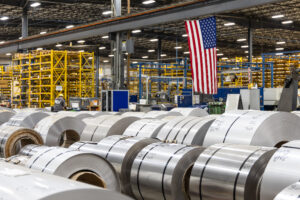
Instant Pricing on Nickel, Stainless Steel, Duplex, and Titanium
Get real-time pricing and availability for nickel, stainless steel, duplex, and titanium—all in one place.
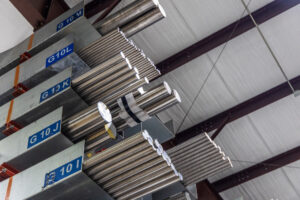
New and Expanded Stock for 2025
New Titanium, Stainless, Nickel and Cobalt in Stock Now – CP Ti Grade 2, 635, 718 and More!
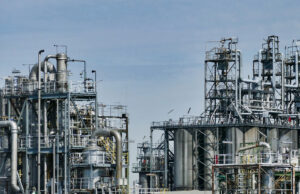
History and Uses of Alloy 800
Discover the evolution of Alloy 800, from its origins during the 1950s to modern derivatives like Alloy 800H/800HT. Learn about its high-temperature strength, petrochemical applications, and commercial availability today.
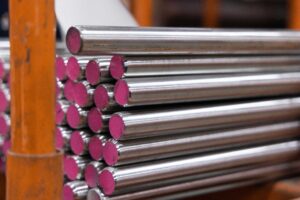
New Bar Stock Available
New Round and Flat Bar Products in Stock at Rolled Alloys





